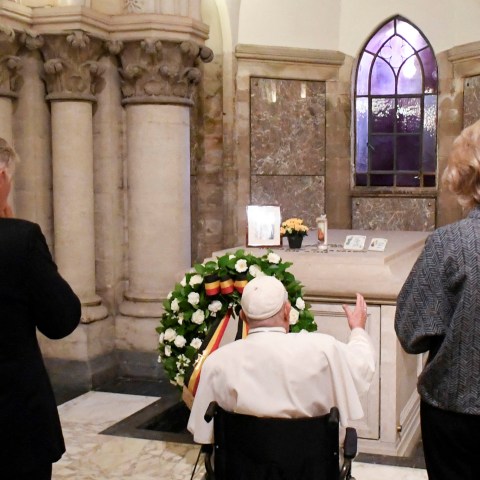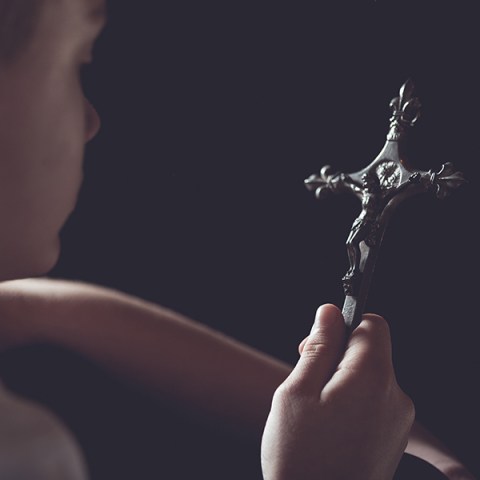In a world where God “created male and female” where do intersex Catholics belong?In the spirit and tradition of St. Thomas Aquinas, there needs to be a presentation (not a debate) on the condition known as Intersex. Aquinas, as many recall, began his investigations by looking at topic and how it might not be in line with the teaching and doctrine of the Roman Catholic Church. It was vital and necessary for him to know all sides of an issue before coming to a conclusion. This dialectical manner of thinking–where both sides of topics were explored thoroughly–contrasts modern ways of thinking which often stress advocacy for a certain position, or fitting facts within an ideology.
The medical condition of Intersex has received little attention from the Church. It is not mentioned in the Catechism. I have not been able to find it referenced in papal statements. There is nothing in the most recent Canon Law discussing this medical anomaly. Yet a significant number of people around the world experience this medical–not psychological condition–and it creates difficulties in the church and in civil law.
Even more important, ignorance of this condition makes it difficult for persons with this condition to receive empathy and acceptance.
The Bible may be used to offer a clear cut answer. In Genesis it states clearly that God created two separate sexes, male and female. However, this occurs before the Fall of Adam and Eve. So a response might be given that an ambiguous sexual condition follows as a result of original sin. There may be description of Intersex persons in the Bible; for example, Isaiah 56:3 talks about the person who is a dry tree. But this could refer to other things, too. Eunuchs have a clear definition: they are males who have been castrated, often for the purpose of being able to associate with women in the King’s Court without risk of sexual activity or birth of children. Yet, another verse in Scripture implies they are born this way.
The history and tradition of the Church itself defines human beings as being either male or female. So one may reflexively take the viewpoint that there really is no truly ambiguous sexual condition, and that either male or female predominates in every case.
Then there is no theological problem. But as modern science begins to discover more and more important biological aspects of gender, a reasonable person might wonder if this new information has relevance to Church teaching. Just as Aquinas brought “pagan” philosophy under the umbrella of the Chruch, perhaps there is a modern-day
Aquinas who can resolve this intimidating area of sexuality.
An Intersex person is not a Transexual person. The most-agreed upon definition of a Transexual person is someone whose “psychological identity” is at variance with their innate biology. This means that a fully normal and biological male views himself as being a female. In order to remedy this condition, many Transexual people seek gender reassignment surgery. A description of this is beyond my expertise. An extremely controversial aspect of gender re-assignment surgery is if it can be done on a child.
State laws are now accepting the above definition of Transexual, and in at least one state a judge has ruled that the state is responsible for paying for sexual-reassignment surgery for a person who is currently incarcerated.
Knowing the history from the past 150 years of so-called “gender identity disorders” as opposed to Intersex may bring more confusion than clarity. In the late 1800s military physicians began to see sexual conditions which appeared to go beyond the categories of male/female. They called these pseudo-hermaphrodites and hermaphrodites. Pseudo-hermaphrodites are probably close to the current definition of Transexual. A century ago, hermaphrodites were defined as having true ovaries as well as functioning penis and testes–a medical impossibility with human beings.
In the 1920s a philosophy–not a medical discovery–made the arbitrary distinction between “gender sexual identity” and “biological sexual identity.” It was claimed that a person might develop a sexual identify different from the one in which they were born with because of environmental or cultural factors. The work of John Money at Johns Hopkins, now frequently discredited, followed within this philosophical and sociological framework.
The Intersex person is defined differently: the biological facts, present at birth, do not fit the discrete biology of a normal male or female. Because of many medical advances in the past 20 years, there have been many discoveries concerning biological differences in males and females beyond the presence or absence of a penis or vagina. Because of this, it is difficult for doctors, or anyone, to assert with certainty that this person is definitely a male or female.
The following medical conditions, in varying combinations, may be present in what is termed an Intersex person: 5-alpha reductase deficiency; androgen insensitivity syndrome, aphallia, clitoromegaly; congenital adrenal hyperplasia; gonadal dysgenesis; mosaicism regarding sex chromosomes; ovo-testes; progestin-induced virilization; Swyer syndrome; Turner syndrome; and Non-Klinefelter XXY.
There has been an interesting discussion on the manner in which the Intersex condition is understood within Catholic theology and canon law. This has occurred on “Catholic Answers,” the largest lay-run apostolate of Catholic apologetics and evangelization within the United States, operating with the permission of the Diocese of San Diego and listed in the current edition of The Official Catholic Directory. A reader with an Intersex condition wrote in and opened a discussion on one of the forums, “What is the Church’s position on the Intersexed and Transsexed?”
Another reader stated:
I want to act in accordance with Isaiah 56:3-5, but when I get different answers (or no answer at all) to the question about what is pleasing to God, then I must rely on my own conscience–and being a sinner, I’m terribly fallible.
Another reader notes: “A Vatican text defines transsexualism as a psychic disorder of those whose genetic make-up and physical characteristics are ambiguously of one sex but who feel they belong to the opposite sex.” Note that this does not define Intersex.
Here is what a reader identifying himself/herself as a canon lawyer with a JCD wrote:
Perhaps the response above is one that Thomas Aquinas would approve of? Is the Church is not currently addressing the issue of Intersex right now–not out of avoidance, but rather of prudence and watchful waiting as more scientific details emerge. What seems totally consistent with the faith, to me, is that learning about the Intersex condition is important–this promotes both intellectual and emotional empathy. Of course, the most Christian response of all is to understand and accept those grappling with this enigmatic and vexing cross, one that only very few of us have had to carry.
William Van Ornum i
s professor of psychology at Marist College and director of research and development/grants at American Mental Health Foundation in New York City. He studied theology and scripture at DePaul University.








